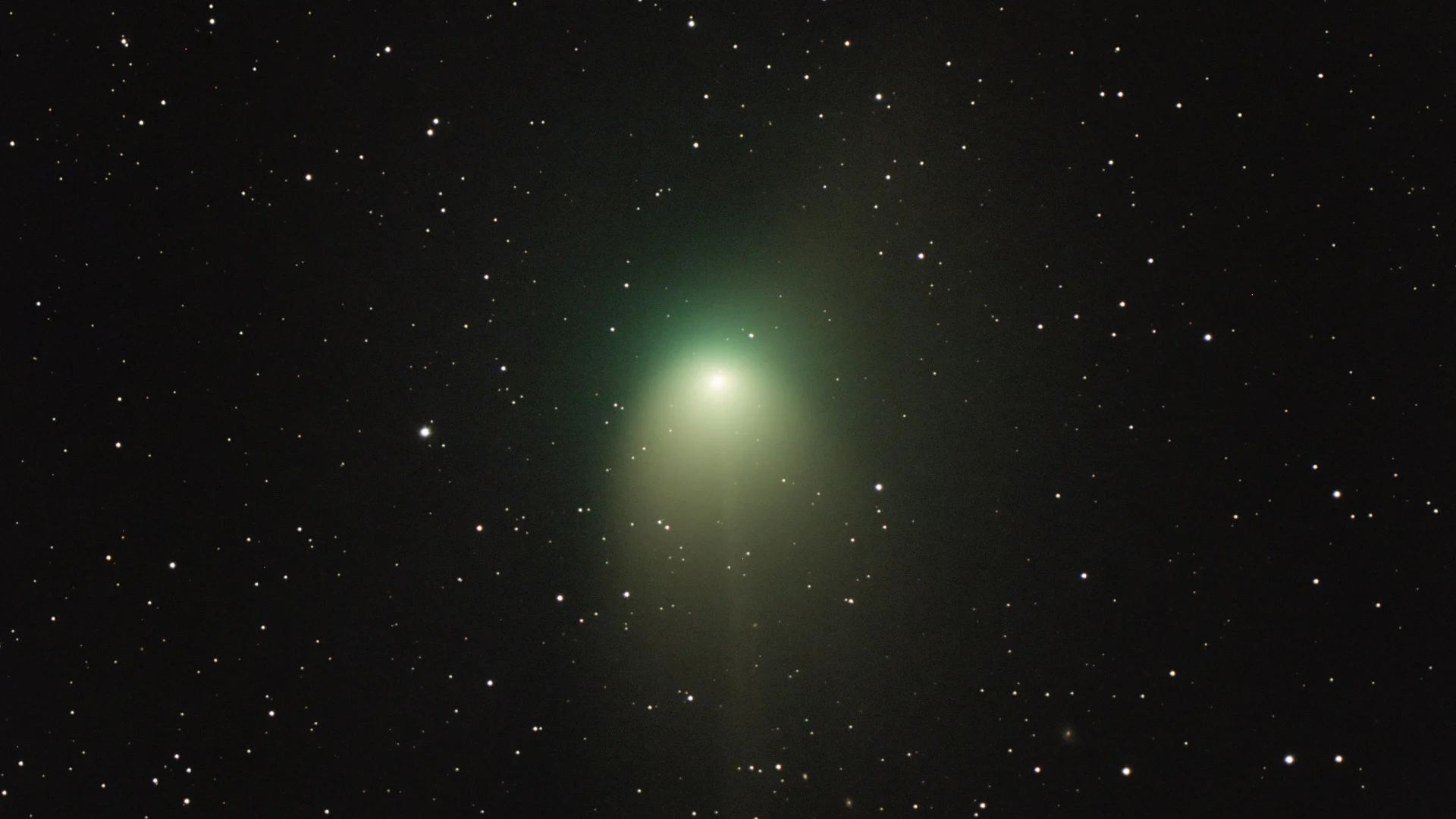
We can still see the rare green comet that just swung past Earth. Here's how
Last seen when Neanderthals still walked the Earth, comet C/2022 E3 (ZTF) may have just swung by our planet for the very last time.
If your weather forecast includes some clear nights over the next week or so, find a dark place to observe the sky and turn your gaze towards the northern constellations. A newfound comet has just passed by Earth, and it is still bright enough to be seen with the unaided eye.
Around 50,000 years ago, when Earth was warming up from the last ice age, Neanderthals and early Homo Sapiens may have gazed up into the night and marvelled as a bright comet tracked across the sky.
Fast-forward to March 2, 2022, when astronomers Bryce Bolin and Frank Masci spotted this very same comet while surveying the sky with the Zwicky Transient Facility (ZTF) at Palomar Observatory in California. Now named C/2022 E3 (ZTF), this comet apparently travelled out to the edge of our solar system and back since its last visit.
C/2022 E3 (ZTF) made its closest pass around the Sun on January 12. It then swung past Earth for a relatively close encounter on February 1.
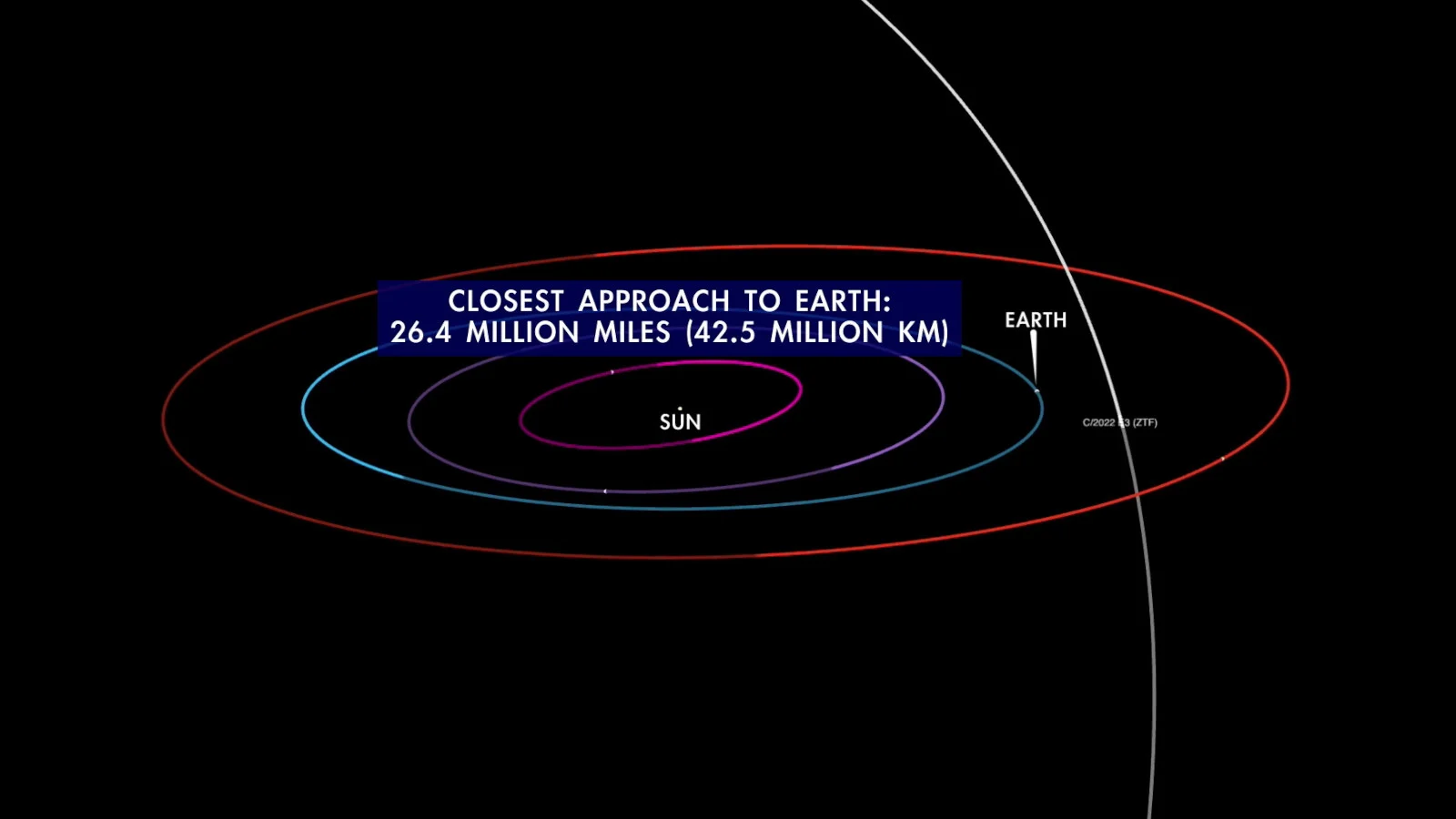
The path of comet C/2022 E3 (ZTF) past Earth, with its closest approach on Feb 1, 2023. Credit: NASA/JPL-Caltech
At that time, it was roughly 42 million kilometres from us, or over 100 times farther than the Moon.
Even that far away, the comet was still bright enough to be visible using binoculars or a backyard telescope. For observers under clear, dark skies, far from city light, it has even been visible without the help of these tools.
Watch below: Andreas Gada shares his views of Comet ZTF from Central Ontario
How to see Comet C/2022 E3 (ZTF)
Locating this comet in the night sky is relatively simple. Based on its path around the Sun, astronomers have already mapped out its exact path as it moves through the constellations, night by night.
As of now, in the first week of February, the comet is in the northern sky, passing through the dark gaps between the constellations.
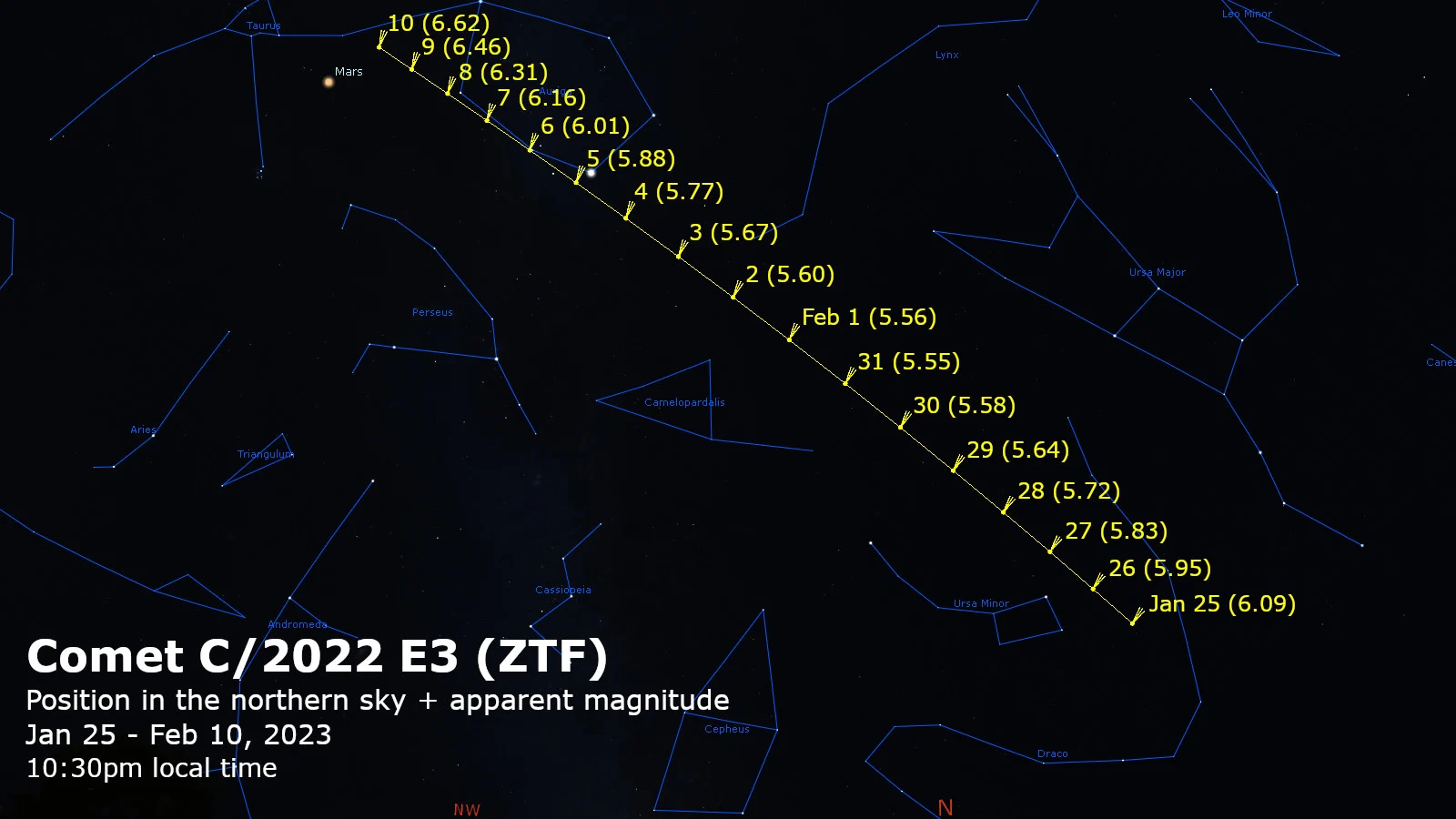
This sky chart shows the position of comet C/2022 E3 (ZTF) in relation to the northern constellations from January 25 to February 10, 2023, at around 10:30 p.m. in each local time zone. The comet's apparent magnitude (in brackets) dips below 6.5 (the limit for viewing with the unaided eye) until Feb 10. Note that the positions of the constellations in the sky will shift slightly night to night, and the Moon may make viewing a bit more challenging for the last few days of January and first few days of February. Credit: Stellarium/Scott Sutherland
To spot C/2022 E3 (ZTF), it helps to first find the constellations that surround it. That will at least narrow down the portion of the sky to look in. A smartphone with an astronomical app such as Sky Map will help, as you can pan around the night sky and it will show you where the constellations are.
In the first few nights of February, the comet is between the constellations Lynx and Camelopardalis. On the night of the 5th, it can be found very near the bright star Capella, and after that, Capella and the planet Mars can be used as guideposts to locate it up until the night of the 10th. At that point, it will likely become too dim in the sky to be seen without binoculars or a telescope.
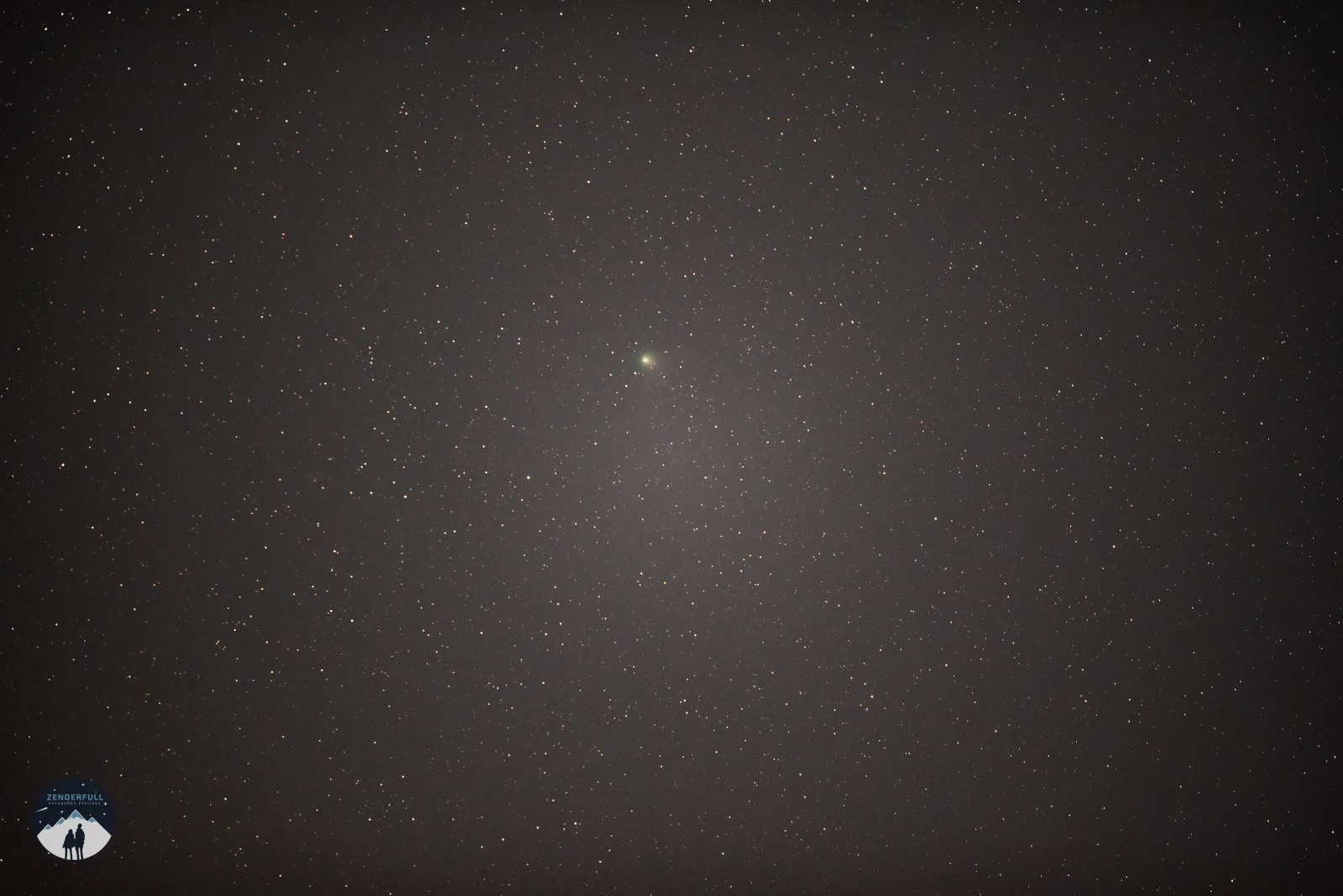
This view of Comet C/2022 E3 (ZTF) was captured from Notre-Dame-de-la-Paix, QC, on January 24, 2023, by Samer Hobeika, founder of Zenderfull, a Montreal-based astrophotography tour company.
Note that the images of this comet — the one at the top of the article, in the timelapse from Andreas Gada, and the one from Samer Hobeika shown above — are optimized to show off the as much detail and colour as possible. They are produced by taking exposures several seconds long, or by 'stacking' multiple images with computer software to maximize the amount of light shown in the single image.
When viewed directly, either with the unaided eye, or with binoculars or a telescope, C/2022 E3 (ZTF) will appear as a dim, hazy smudge, with a slight green tinge of colour. With a good pair of binoculars or a larger telescope, it may be possible to pick out the general shape of the comet as well.
When trying to observe C/2022 E3 (ZTF), it's important to give your eyes about 20-30 minutes to adjust to the dark. Avoid any bright lights during that time. Also, light pollution will have a impact on the comet's visibility. It will be virtually invisible to anyone observing from inside a large urban centre. Even the Moon — scheduled to reach its Full phase on the night of February 5 — will affect how well it can be seen.
Anyone with access to a pair of binoculars or a small backyard telescope should be able to see C/2022 E3 (ZTF) on clear nights for much longer. The bigger the binoculars or telescope, the longer the comet will remain visible and the more details the observer will pick out.
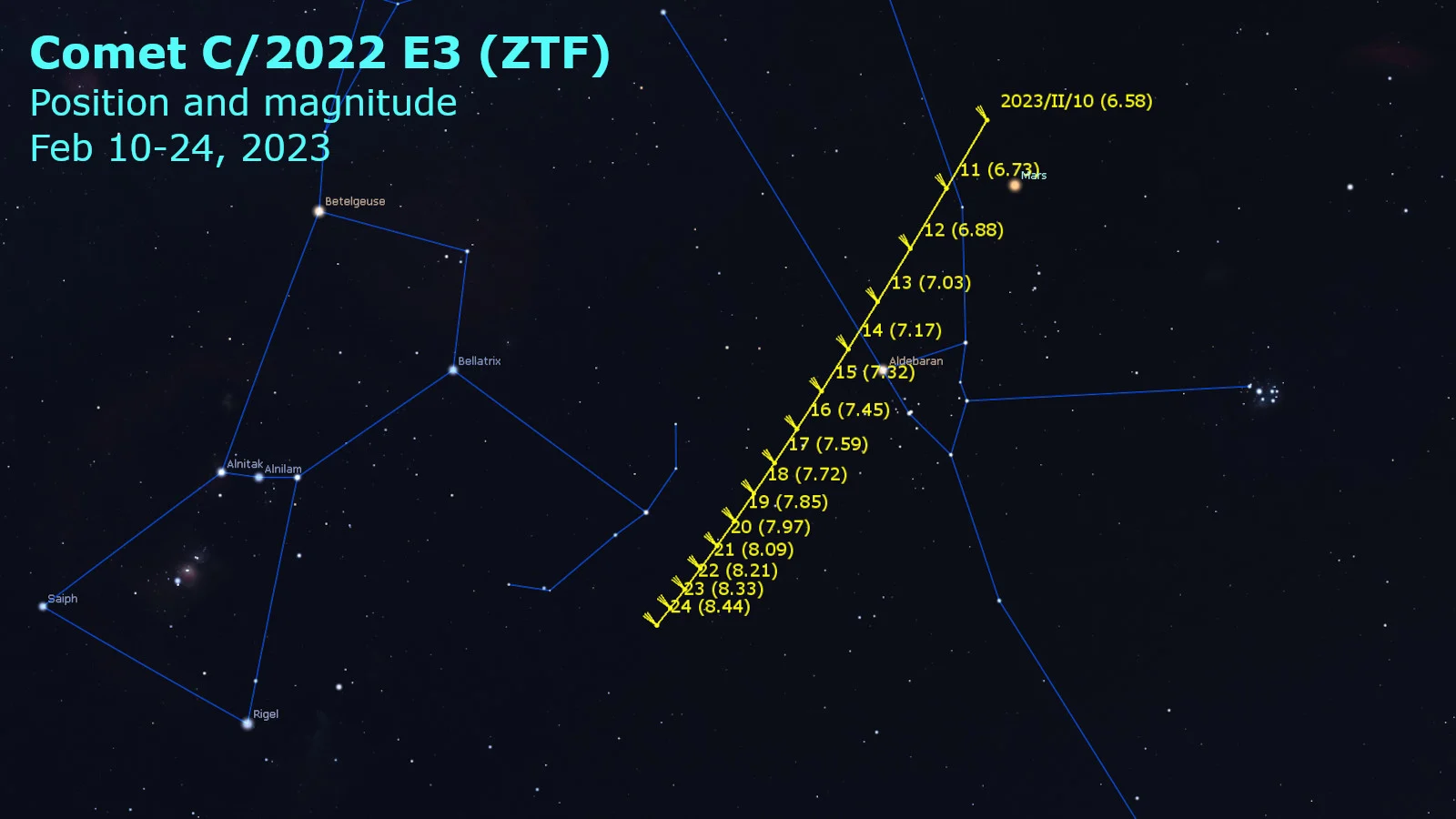
This sky chart shows the position and magnitude of C/2022 E3 (ZTF) from February 10-24, in the southern and southwestern sky, as it passes through the constellation Taurus and then past Orion. Credit: Stellarium
Read more: Bright 'evening star' Venus dazzles this winter in two planetary conjunctions
C/2022 E3 (ZTF)'s final visit to Earth?
With an estimated 50,000-year orbit, there's very little chance that anyone alive on Earth today will still be around if the comet comes back. However, from all indications, C/2022 E3 (ZTF) won't ever be swinging past Earth again because it is currently on a trajectory to be ejected from our solar system for good.
The dust, asteroids, comets, and even planets in our solar system trace elliptical paths as they orbit around the Sun. The shape of the ellipse any particular object follows is measured by its "eccentricity", which has a value between greater than zero and less than one. The closer it is to zero, the more circular the orbit is, and the closer to one, the more stretched out the ellipse is.
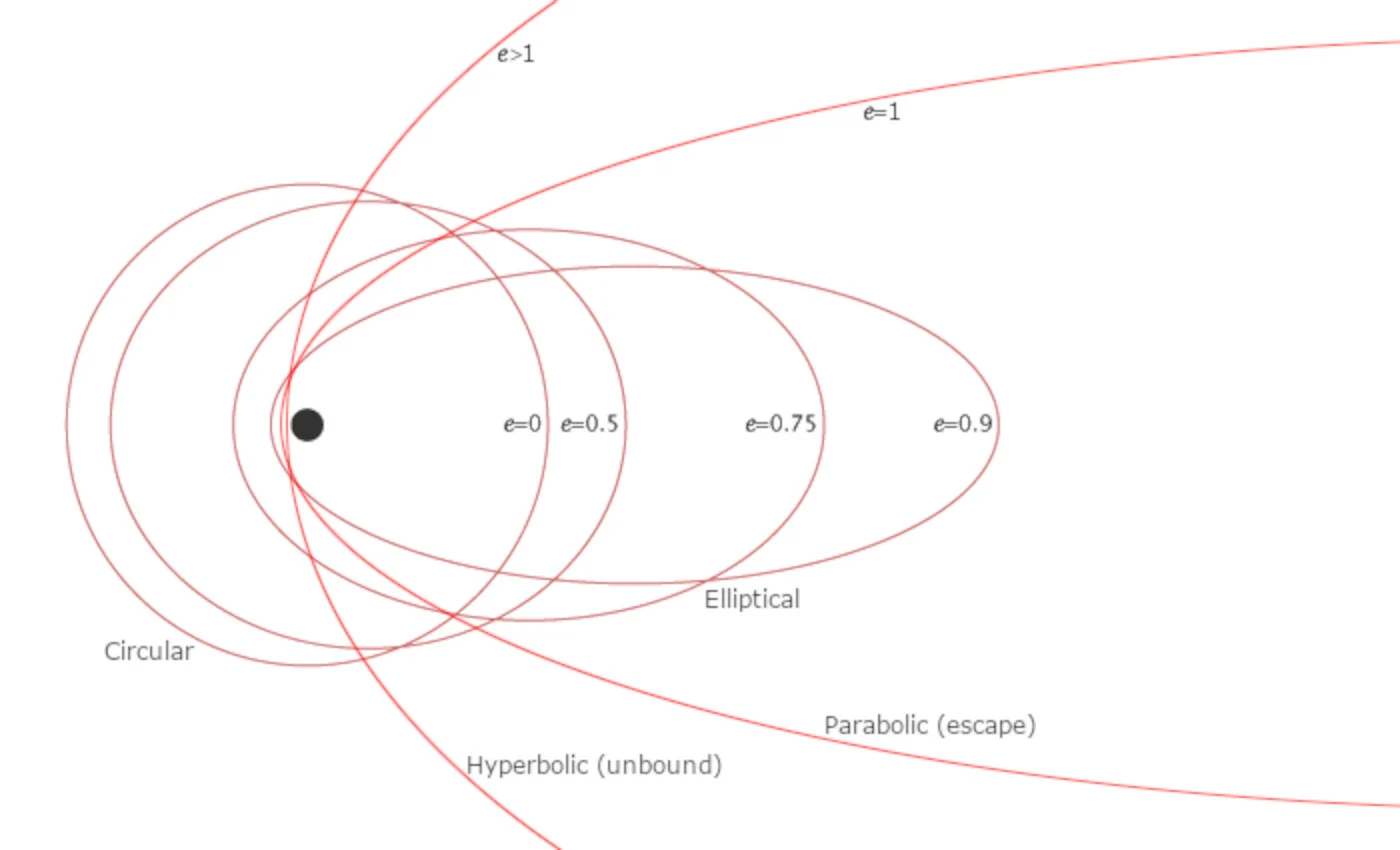
*The shapes of different orbits are shown here, from the bound circular (e=0) and elliptical (0<e<1) orbits, to the parabolic (e=1) escape trajectory and unbound hyperbolic (e>1) trajectory. Credit: NASA/Robert Simmon/Scott Sutherland
From NASA's database, C/2022 E3 (ZTF) has an eccentricity of roughly 1.00027.
With an eccentricity greater than 1, that means the comet is no longer bound to the Sun. It is following an 'escape trajectory' — one that's either parabolic or hyperbolic — so, once it's gone, it is never coming back.
One way or another, we should all get out to see C/2022 E3 (ZTF) as it swings past. Unfortunately, we're not going to get another chance!
(Thumbnail image courtesy Andrea Girones, from Ottawa, taken on January 26, 2023. Andrea says: "Shortly after sunset there was a brief pocket of clear sky to the north and I took advantage of it to take a quick 2 minute exposure of Comet 2022 E3 ZTF, otherwise know as the 'rare green comet'. This comet last visited earth over 50,000 years ago, and the green colour come from the dicarbon molecules in the comet that are broken down by the ultra violet light from the sun.")











